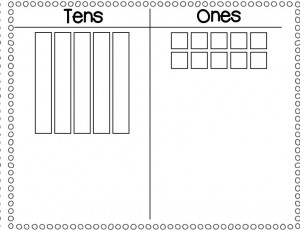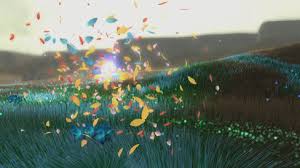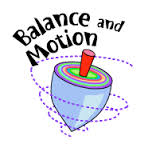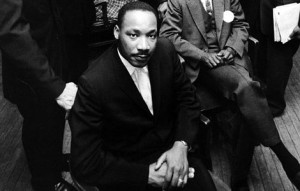Posted by kavery508 | Posted in Uncategorized | Posted on January 13, 2014
It’s that time of year: budget talks are beginning! The school district budget, and constraints related to it, affects in a very real way what goes on here day to day. Your child WILL be impacted next year, regardless of grade. Please read the message below and attend the meeting which should prove helpful at explaining and answering questions regarding next year:
A Message from the Floral Street School Council and PTO:
The Floral Street School Council and PTO invite parents, teachers, and neighbors to a community meeting to discuss pressing school and district issues including:
✦ Resource needs and challenges facing the school and district
✦ Fiscal Year 2015 budget development
✦ Ways to be involved and stay informed
School committee members, Jason Palitsch and Sandy Fryc will be special guests at the meeting. Join us on January 27th from 6:45-8:00pm in the Floral Street School Media Center. Childcare will be provided for children ages 3 and older. Please click on the link below to RSVP, sign up for childcare, and/or submit questions for discussion. https://docs.google.com/forms/d/1A-GpCYIJ8iQmbRwIqGqhms_2O_jVR-adur6eY6y-SBE/viewform Thank you for your time, we hope to see you there.
 Our CAFE focus this week is on Inferring, which is a strategy we use all the time to help us understand what we’re reading. When we infer, we use our schema (what we already know about something) and combine it with clues from the text to understand something new. Consider these lines from Eloise Greenfield’s poem Things: Went to the beach/Played on the shore/Built me a sandhouse/Ain’t got it no more. My schema tells me that at the beach we build sandcastles, which is what she likely means, and sometimes the ocean comes and washes them away–that’s why the speaker “Ain’t got it no more.” Kids and grownups infer all the time in real life, for example: Snow is in the forecast. When the phone rings at 5:30 AM we can infer school will be delayed or cancelled! It’s smart to catch it when it happens and ask “How did you infer that? What were your clues?” Here is a site that, while designed for teachers, has lots of great info and links on inference: http://www.minds-in-bloom.com/2012/02/tips-for-teaching-inference.html
Our CAFE focus this week is on Inferring, which is a strategy we use all the time to help us understand what we’re reading. When we infer, we use our schema (what we already know about something) and combine it with clues from the text to understand something new. Consider these lines from Eloise Greenfield’s poem Things: Went to the beach/Played on the shore/Built me a sandhouse/Ain’t got it no more. My schema tells me that at the beach we build sandcastles, which is what she likely means, and sometimes the ocean comes and washes them away–that’s why the speaker “Ain’t got it no more.” Kids and grownups infer all the time in real life, for example: Snow is in the forecast. When the phone rings at 5:30 AM we can infer school will be delayed or cancelled! It’s smart to catch it when it happens and ask “How did you infer that? What were your clues?” Here is a site that, while designed for teachers, has lots of great info and links on inference: http://www.minds-in-bloom.com/2012/02/tips-for-teaching-inference.html
 In writing, we are increasingly focusing on adding details that explain our thinking. We will practice that skill by learning to write out procedures this week (how to tie a shoe, etc.). The goal is for students to be clear but thorough in their explanations, so that another person could follow the procedure just by reading it. As always, grammar, punctuation, and handwriting count!
In writing, we are increasingly focusing on adding details that explain our thinking. We will practice that skill by learning to write out procedures this week (how to tie a shoe, etc.). The goal is for students to be clear but thorough in their explanations, so that another person could follow the procedure just by reading it. As always, grammar, punctuation, and handwriting count!
 Our math work with place value and comparing numbers continues this week. After learning the tens and ones that make up two-digit numbers, we will apply this knowledge in activities that challenge us to compare two numbers (e.g. something weighing 34 lbs. is less that something weighing 43 lbs.–see how important place value is?). We will also spend time on word problems and solving problems, focusing on what the questions is really asking and what a good answer looks like. Here is a site with more information that is an excellent at-home math resource for families throughout the elementary years: http://www.coolmath4kids.com/addition/03-addition-lesson-place-values-01.html
Our math work with place value and comparing numbers continues this week. After learning the tens and ones that make up two-digit numbers, we will apply this knowledge in activities that challenge us to compare two numbers (e.g. something weighing 34 lbs. is less that something weighing 43 lbs.–see how important place value is?). We will also spend time on word problems and solving problems, focusing on what the questions is really asking and what a good answer looks like. Here is a site with more information that is an excellent at-home math resource for families throughout the elementary years: http://www.coolmath4kids.com/addition/03-addition-lesson-place-values-01.html
 We will apply our knowledge of poetic elements by analyzing local author and poet John Updike’s January. Consider the first stanza:
We will apply our knowledge of poetic elements by analyzing local author and poet John Updike’s January. Consider the first stanza:
The days are short,
The sun a spark,
Hung thin between
The dark and dark.
What images spring to mind? Use inference to make sense of the metaphor of the sun as a spark between the dark and dark. What rhythm and rhyme are present? What is the tone of the poem (how does the poet create feeling with words)?
 In science we will learn about balance point. This is the spot around which the forces in a system are in equilibrium, often in the base or at the center of an object. Here are sites with more info and activities you can try/modify at home!
In science we will learn about balance point. This is the spot around which the forces in a system are in equilibrium, often in the base or at the center of an object. Here are sites with more info and activities you can try/modify at home!
http://sciencenetlinks.com/afterschool-resources/balancing-points/
 Next in social studies we will explore citizenship by examining the qualities that good citizens/leaders display (honesty, perseverance, courage, etc.). After spending time identifying character traits of characters in stories we have read, we will now apply them to real life subjects, beginning with Martin Luther King, Jr. National Geographic for Kids (an excellent at-home resource for all things social studies) has an awesome collection of photos, along with biographical information: http://kids.nationalgeographic.com/kids/photos/gallery/martin-luther-king-jr/
Next in social studies we will explore citizenship by examining the qualities that good citizens/leaders display (honesty, perseverance, courage, etc.). After spending time identifying character traits of characters in stories we have read, we will now apply them to real life subjects, beginning with Martin Luther King, Jr. National Geographic for Kids (an excellent at-home resource for all things social studies) has an awesome collection of photos, along with biographical information: http://kids.nationalgeographic.com/kids/photos/gallery/martin-luther-king-jr/

